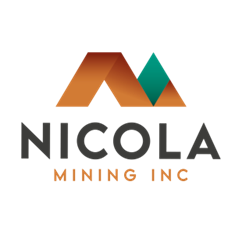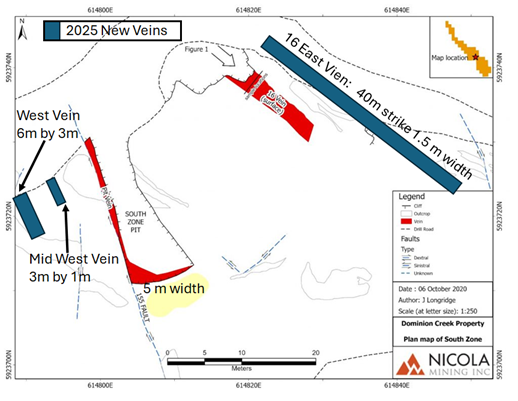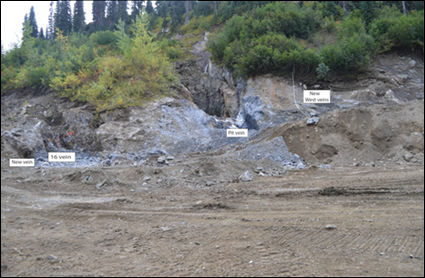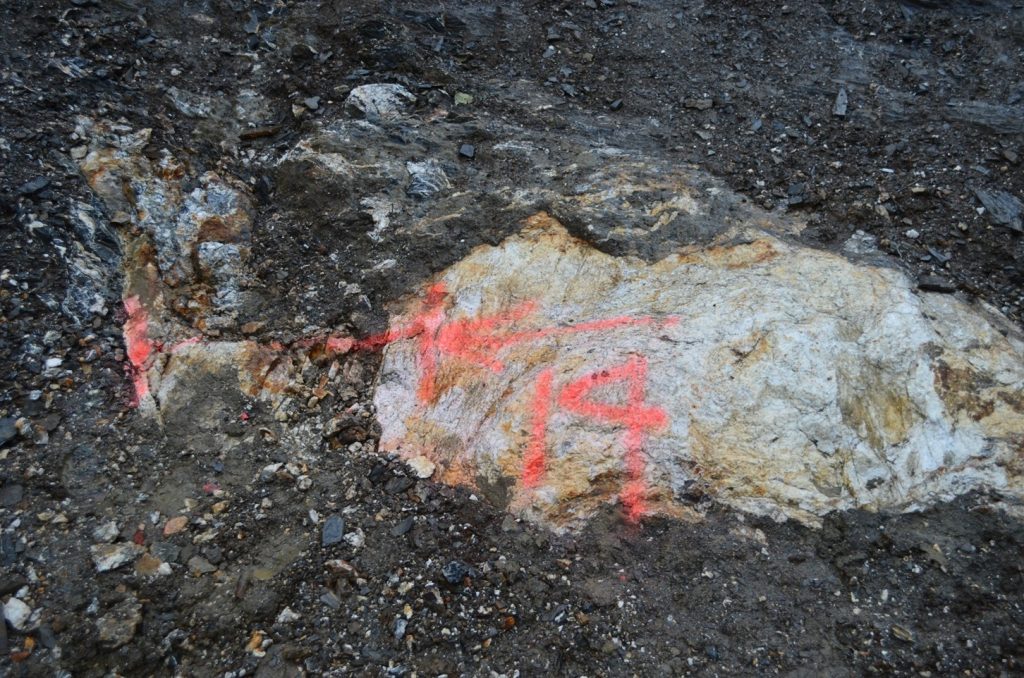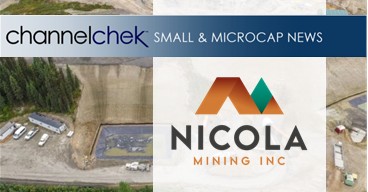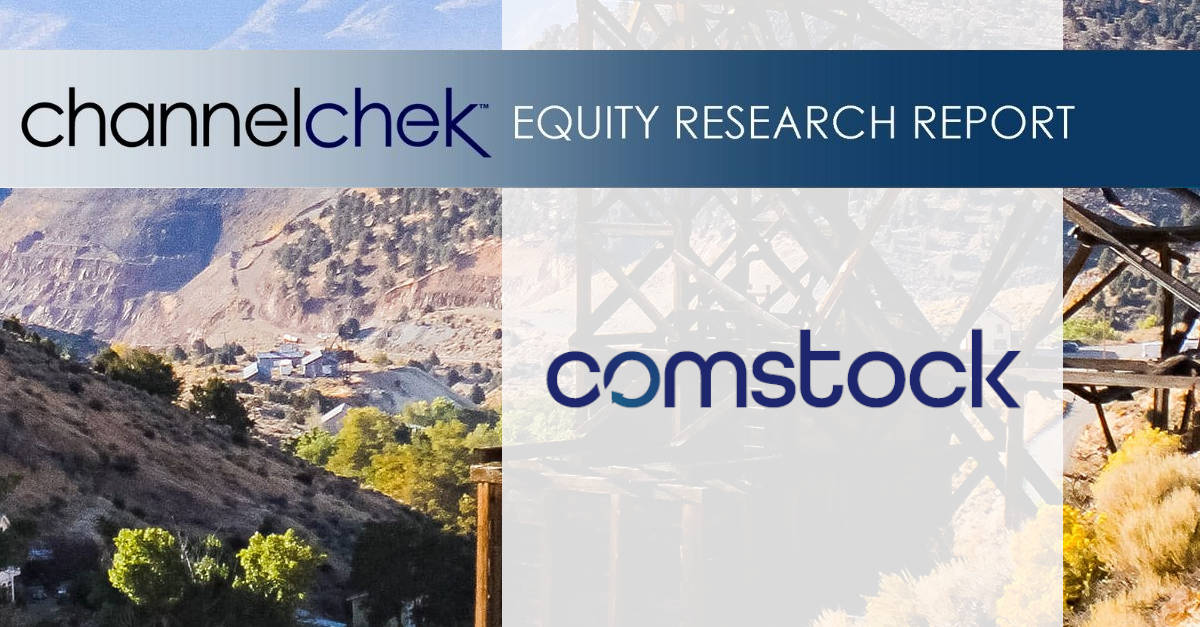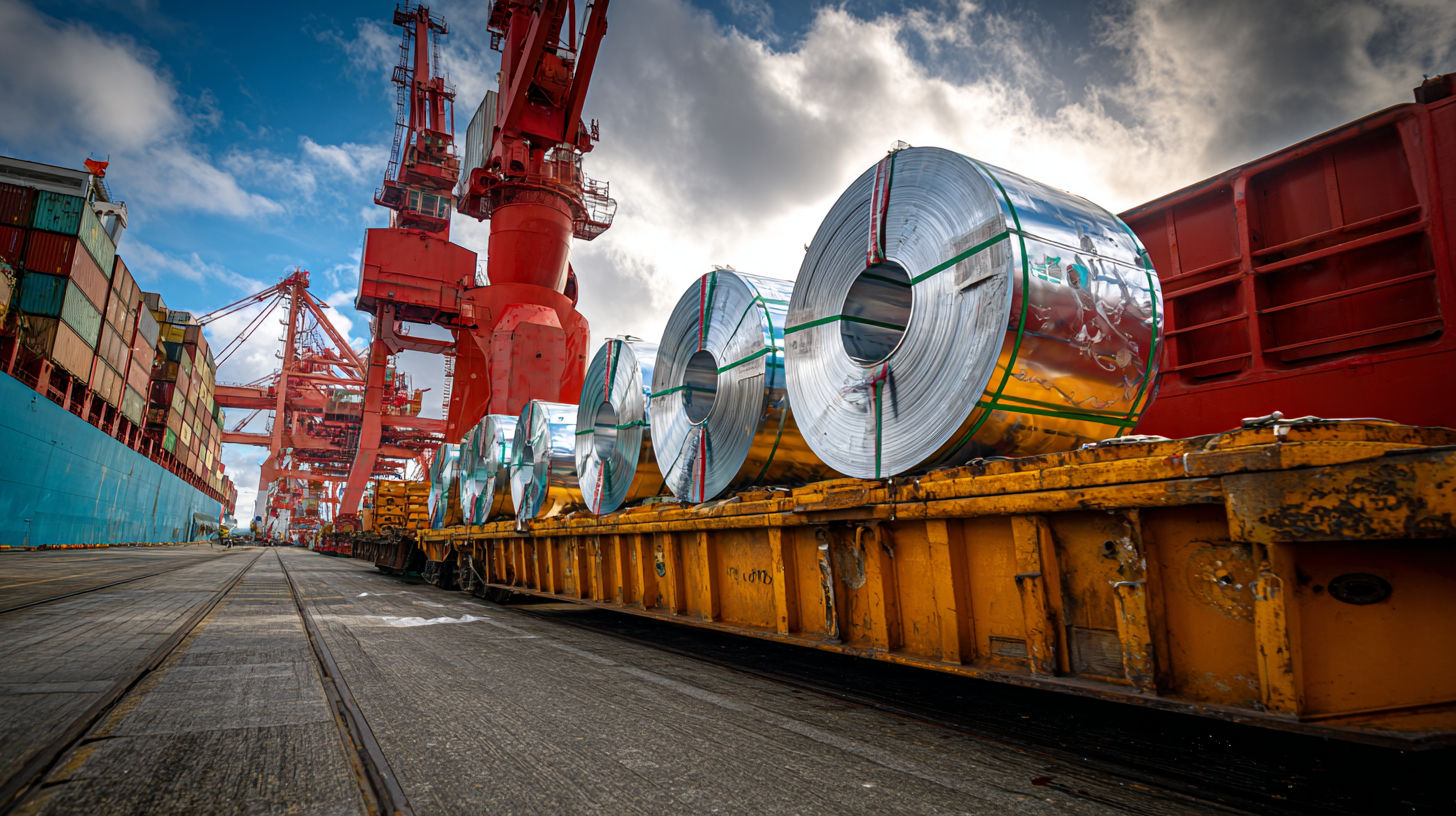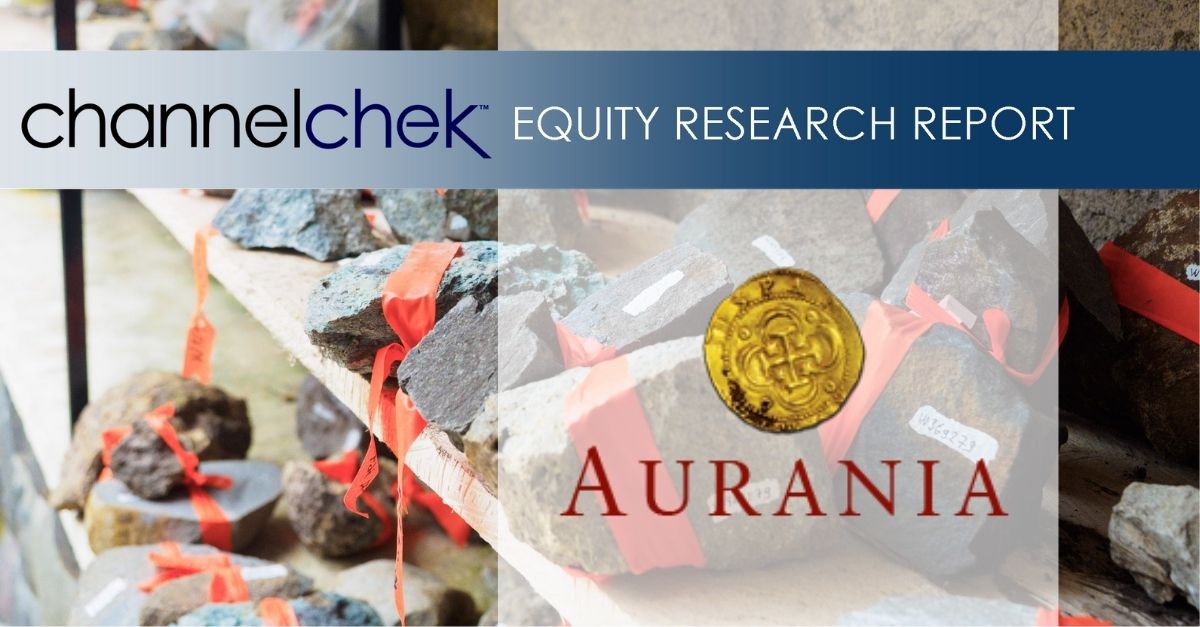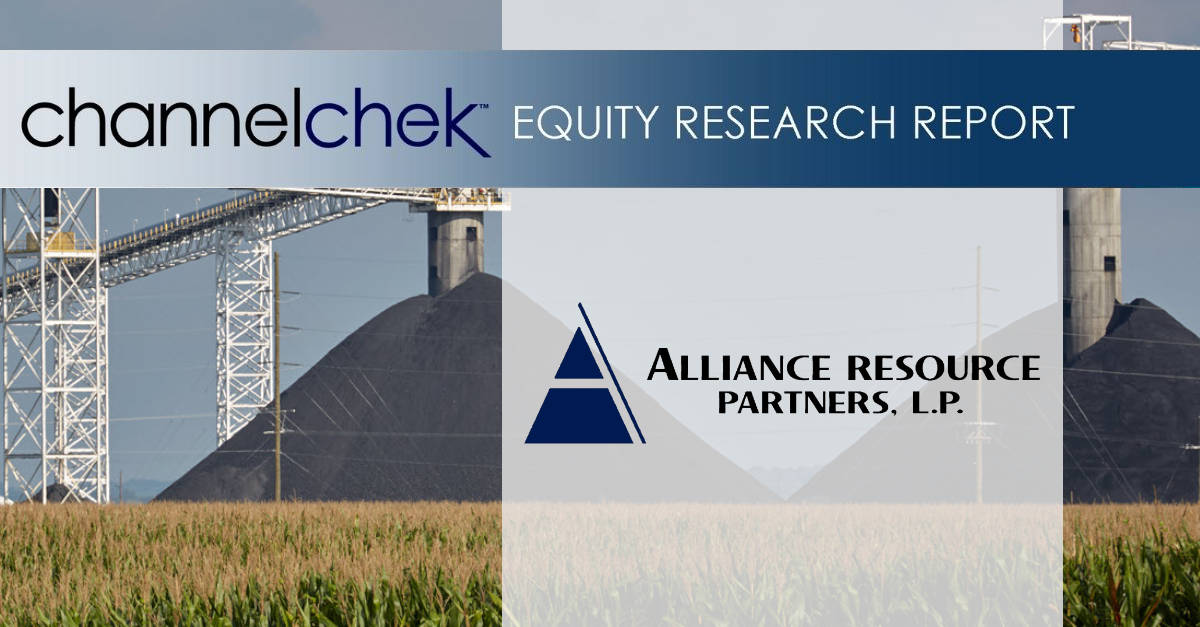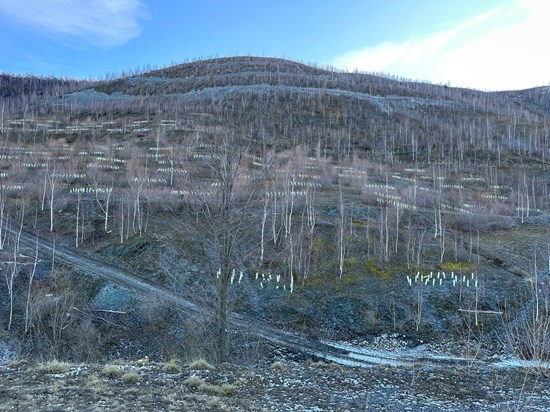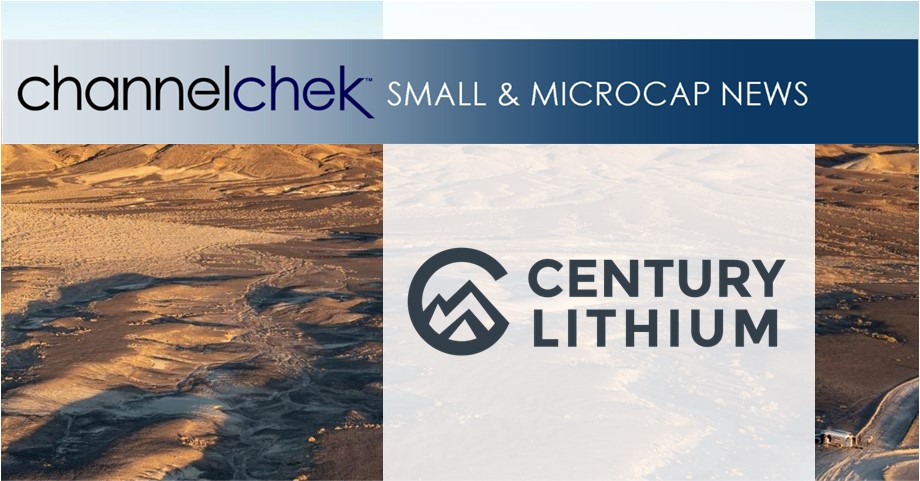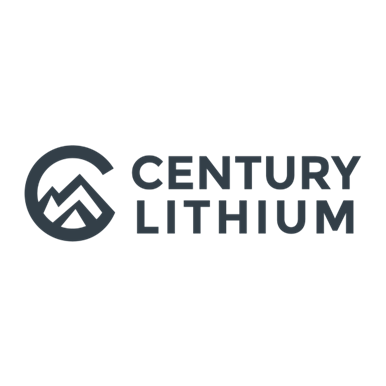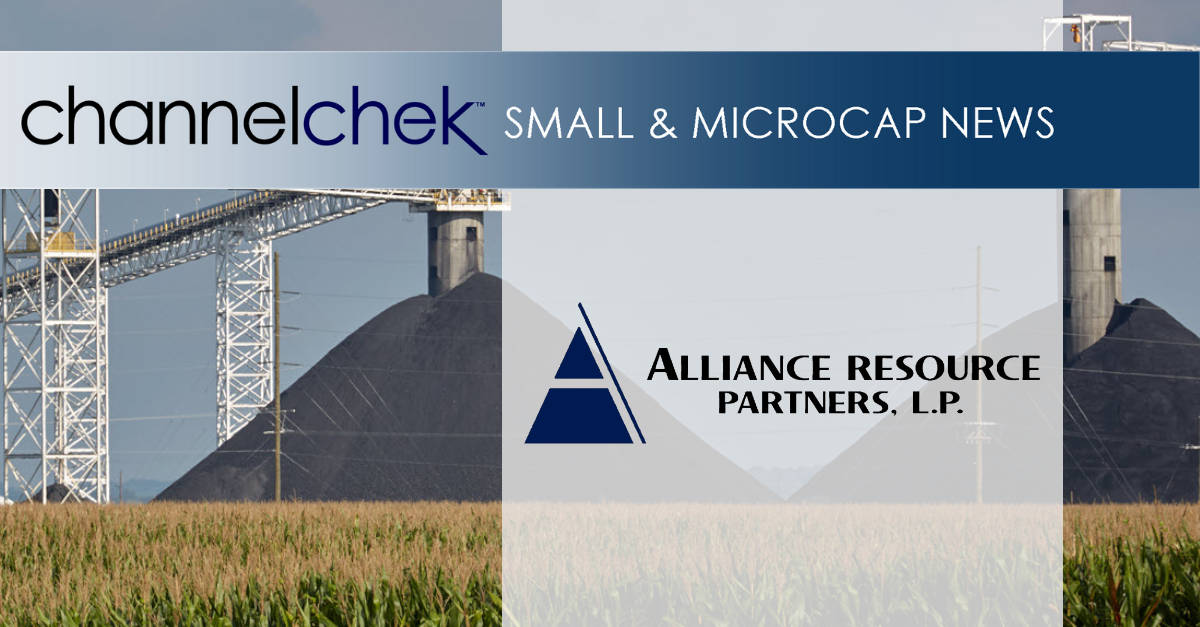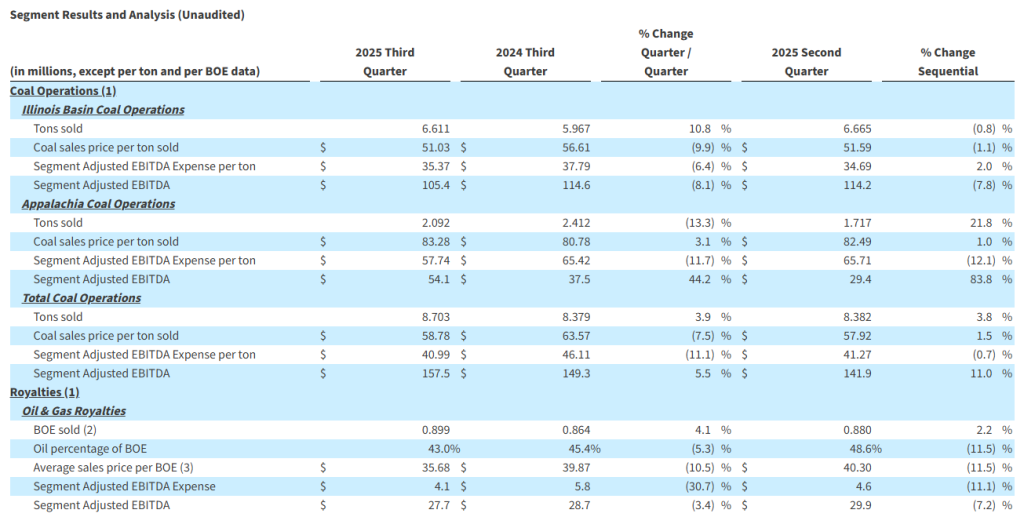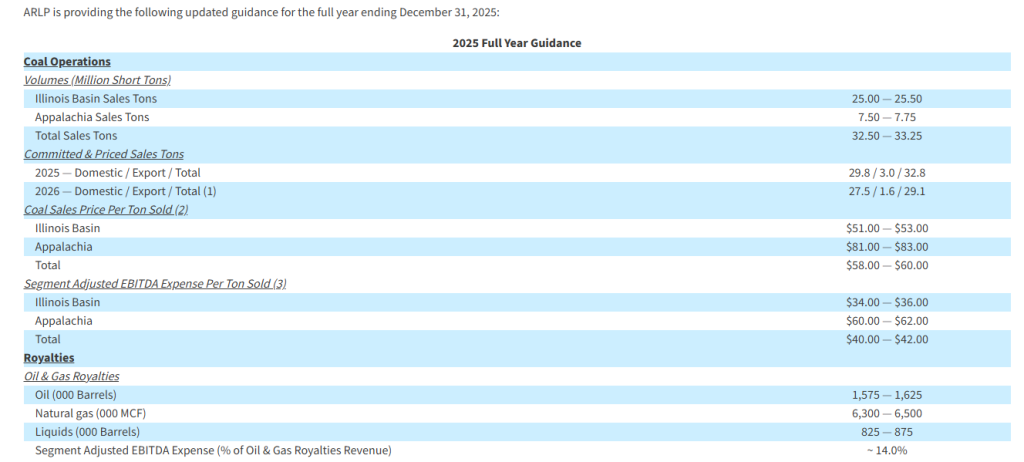Research News and Market Data on LODE
Fortifies Capital Base, Eliminates Debt Obligations and Funds Industry-scale Metals Launch
VIRGINIA CITY, NEVADA, October 30, 2025 – Comstock Inc. (NYSE: LODE) (“Comstock,” “our,” and the “Company”), today announced its third quarter 2025 financial results, business updates and an updated 2025 business outlook.
Recent Corporate Transactional and Liquidity and Capital Resources Highlights
- Completed the oversubscribed equity raise of $34.5 million in gross proceeds ($31.8 million net of offering expenses), including overallotment, adding over 30 institutional investors to our capital base and fully funding and accelerating the commercialization of our R2v3/RIOS Responsible Recycling certified zero-landfill solar panel recycling business;
- Eliminated all debt instruments (convertible and promissory notes) and other significant payables and obligations;
- Placed equipment orders and paid deposits totaling $5.1 million toward the purchase of our first industry-scale solar recycling facility in Silver Springs, Nevada, capable of recycling over 3.3 million panels per year (or approximately 100,000 tons per year), and advanced activities for the next three site selections for U.S. facilities and storage capacities;
- Completed the purchase of the Haywood industrial mineral properties from Decommissioning Services LLC for a previously paid $2.2 million in cash and stock. The Company received cash proceeds of $0.4 million by closing the sale;
- Executed a series of balance sheet strengthening transactions that extinguished or paid down future obligations, including those associated with acquiring AST equipment (fuels), LINICO assets, Northern Comstock mineral interests (mining), and Haywood land (mining) as well as extinguishing the Convertible Notes, Promissory Notes and other liabilities;
- Increased net current assets to $21.3 million (current assets of $35.1 million less current liabilities of $13.8 million);
- Cash & cash equivalents were $31.7 million as of September 30, 2025 (including $12.4 million at Bioleum Corp.); and
- Common shares outstanding on September 30, 2025, and on October 27, 2025, were 51,264,247.
“In January, we communicated that our progress and new states of technological readiness had positioned us for the right types of new capital to fund the growth of two extraordinary opportunities, a Nevada-based renewable metals company and an Oklahoma-based renewable oil and gas company, that, remarkably, are now funded for and rapidly moving to deploy their solutions. In all instances now, multiple, sophisticated, strategic and financial investors have made material investments in us, as we accelerate to industry-scale production,” stated Mr. Corrado De Gasperis, Executive Chairman and CEO of Comstock Inc.
Selected Segment Highlights for Comstock Metals
“We have ordered all of the equipment for our fully automated, industry-scale solar recycling system, and we just received affirmation on the imminent issuances of our remaining permits, on schedule, and we look forward to commissioning our first-of-its-kind, pace-setting, zero-landfill, clean solar recycling solution,” said Dr. Fortunato Villamagna, President of Comstock Metals. “We are actively engaged in the market and with our strategic customers to uniquely position ourselves for the dramatic and accelerating increases in the domestic end-of-life solar dispositions we see coming 2026, 2027, 2028, and well beyond.”
Comstock Metals (for the nine-months ended September 30, 2025)
- Received notice for the imminent receipt of our main operating permits for our industry-scale facility in Nevada;
- Recorded billings of $2.9 million ($1.8 million deferred) in 2025, versus $65 thousand in the first nine months of 2024;
- Committed to Industry-scale capital expenditures of ~$12.5 million (including expanded storage) with $5.1 million in equipment deposits paid as of September 30, 2025; and full commissioning during the first quarter of 2026;
- Certified R2v3/RIOS Responsible Recycling Standard by Sustainable Electronics Recycling International (SERI), authenticating the first zero-waste recycling process that safely repurposes all the recycled materials;
- Entered into a Master Services Agreement (MSA) with RWE Clean Energy (“RWE”), serving as a preferred, strategic partner for the end-of-life recycling, disposal, and decommissioning services for RWE’s solar installations; and
- Secured three additional (this quarter) intake (tipping) master service revenue arrangements across the U.S., including industry leading customers as well as a prominent OEM for components and off-spec panels.
“Our focus has been dedicated to continuing our business development activities to bring in panels, finalizing the site preparation, storage preparation, equipment orders and equipment supplier management, and final permits, which, based on recent meetings and review are imminent and on schedule with our overall commissioning plans,” said Comstock Metals President, Dr. Fortunato Villamagna, “while our marketing team continues to drive our message that we are the only true recycling option in the industry, and our facility planning team simultaneously coordinating strategic site selections (processing and storage) across the whole country. We remain the only certified R2v3/RIOS Responsible Recycling Standard by SERI for solar panel recycling.”
Selected Segment Highlights for Comstock Mining (for the nine-months ended September 30, 2025)
- Closed on the sale and monetization of the northern district claims for approximately $3 million in proceeds, including the acquisition, for no additional consideration, of more than 238 acres of Lyon County mineral properties, further enhancing our portfolio of Lyon County mineral properties and directly supporting the Dayton resource mine plans;
- Increased our internal economic mineralized material estimates based on significantly higher gold and silver prices; and
- Advanced the Preliminary Economic Assessment (PEA) for the Dayton with planned future publishable economics.
In October 2025, we acquired the Haywood Quarry properties for no additional consideration, representing an additional 190 acres, further enhancing our portfolio of Lyon County mineral properties and directly supporting the Dayton plans.
“The rapidly rising industrial silver demand and ongoing geopolitical concerns, compounded by decades of questionable monetary policy, created an unprecedented runup in gold and a possibly greater set up for silver prices over the next several years. Our historic, world-class Nevada mining assets are well positioned for expansion and monetization with sophisticated strategic and financial partners,” said Comstock’s Chief Financial Officer and Comstock Mining President, Mr. Judd Merrill.
Selected Highlights for Bioleum Corporation (“Bioleum”) (for the nine-months ended September 30, 2025)
- Separated our fuels portfolio and resources into the newly created, Oklahoma-headquartered Bioleum Corporation:
- Exchanged our five-year, $65 million investment into a Series 1 Convertible Preferred Stock that is ultimately convertible into 32.5 million underlying common shares of stock of Bioleum Corporation;
- Closed on a $13 million strategic pre-Series A investment from subsidiaries of Marathon Petroleum Corp. (“MPC”);
- Closed on a $20 million Series A preferred equity financing, with additional Series A planned for early 2026;
- Hired exceptional biofuel industry veterans, including a Director of Capital Markets, to accelerate commercialization;
- Restarted the Madison, Wisconsin MPC pilot facility, expanding and fully integrating the Madison development teams;
- Secured the first site and advanced site-specific engineering for the initially planned Oklahoma-based Bioleum refinery;
- Earned the second $1 million of the $3 million in awards from Oklahoma’s Quick Action Closing Fund; and
- Advanced certain strategic acquisitions that further increase yields, reduce costs, and lower carbon intensity “CI” scores.
“Our remarkable Bioleum team has developed an unprecedented, versatile, and exceptionally high-yield, ultra-low-carbon biofuel platform that integrates waste streams and purpose-grown crops in an extending eco-system designed to produce an abundance of extremely low carbon liquid fuels,” said Corrado DeGasperis, Chairman of Board of Bioleum Corporation. “Our working teams in Wisconsin and Oklahoma are expanding as we integrate our efforts into a system designed for accelerating commercially viable technologies while integrating and expanding a series of farm-and-waste woody biomass to fuels production platforms.”
Our goal is to Accelerate the Commercialization of Breakthrough Technologies.
Comstock innovates and commercializes technologies, systems and supply chains that extract, integrate and convert under-utilized natural and waste resources into clean energy products, including pioneering technologies that produce electrification metals and minerals from end-of-life solar panels, including aluminum, silver and other critical metals.
Bioleum innovates and commercializes technologies, systems and supply chains that secure, extract, integrate and convert carbon-based materials from under-utilized waste and purpose-grown energy crops that would ultimately produce a broad range of extremely low carbon renewable fuels, including cellulosic ethanol, renewable diesel and sustainable aviation fuels.
We are pushing the boundaries of technology and sustainability by leveraging our teams’ unique skills, our investments and the related diverse technology portfolios and our frontier research and development networks toward achieving breakthrough innovations that deliver meaningful positive impact across industries, economies and communities. The primary focus for 2025 is the commercialization of Comstock Metals and the continuous innovation, development and engineering of technologies and solutions, by us and by our partners, that support the efficient conversion of these resources into clean, profitable energy products.
Corporate
The growth opportunities for both Comstock Metals and Bioleum developed beyond our original plans, and we have now realigned both the organizations and their respective capital bases with some of the most sophisticated partners for investment, feedstocks, technologies, operations, and offtakes, including significant investments.
We are expanding those partnerships across both our extended metals and fuels systems and supply chains, positioning them for industry leadership, exponential revenue growth and superior throughput profiles, especially for Metals and leading to cash profitability for Comstock Metals in 2026.
Comstock now owns a $65 million face value convertible preferred stock in Bioleum Corporation, ultimately convertible into 32.5 million common shares of stock, positioning an exceptional value potential for Comstock’s shareholders and preserving Comstock’s ability to accelerate the growth and delivery of that value directly to shareholders.
The Company’s Corporate remaining objectives for the rest of 2025 include:
- Advance our legacy real estate and non-strategic investments for ultimate monetization;
- Support the next phases of accelerating Metals growth; and
- Finalize, communicate and implement plans to unlock maximum value from the separation of Bioleum.
The Company’s 2025 efforts to date have now resulted in two, fully dedicated, high-growth companies: our Nevada-based renewable metals operation with expanding production and our Oklahoma-headquartered Bioleum Corporation, with major research, development and pilot production operations based in Wausau and Madison, Wisconsin.
Comstock Metals
Comstock Metals has now been operating its first commercial demonstration facility for nearly 21 months and in November of 2024, submitted permits for the first industry-scale photovoltaic recycling facility. The Company expects these permits to be issued imminently during the fourth quarter of 2025. The industry-scale facilities are designed for 100,000 tons of annual capacity, with operations commencing post commissioning during the second quarter 2026.
Additional site selection activities are ongoing for the next two industry-scale facilities and multiple associated storage sites. The Company plans to ultimately build up to 7 industry-scale U.S. based recycling facilities.
The Company’s Metals remaining objectives for the rest of 2025 include:
- Receive final permits for our first industry-scale facility in Silver Springs, NV;
- Procure, deploy, and assemble plant and equipment for our first industry-scale facility in Silver Springs, NV;
- Secure additional Master Service Agreements (MSA) with national and regional customers;
- Complete site selection for two additional solar panel recycling locations;
- Expand the system globally with international strategic and capital partners; and
- Advance R&D efforts to recover more and higher-purity materials from recycled streams for offtake.
The capital expenditures for the first 100,000 tons of annual capacity for the first industry scale facility are expected to be approximately $12.5 million which includes expanded storage. As of September 30, 2025, the Company paid deposits of $5.1 million for property, plant and equipment and anticipates a total capital spend of $10.0 million for the industry-scale by the end of 2025, with an additional $2-3 million expected in the first quarter of 2026. Billable revenues are expected to be eight times greater in 2025, as compared to 2024, or over $3.5 million, with proportionate 2026 increases as we scale up our facility.
Comstock Mining
Comstock Mining has amassed the single largest known repository of historical and current geological data within the Comstock mineral district, including extensive geophysical surveys, geological mapping, and drilling data, including the Dayton resource.
The Company’s Mining remaining objectives for the rest of 2025 include:
- Commercialize agreements that either monetize or enable resource expansion of the central claims;
- Publish the Dayton Consolidated Project technical work with preliminary economics and sensitivities; and
- Complete the preliminary mine plans that enable the economic development of the southern district claims.
The Company’s 2025 efforts will apply economic analysis to Comstock’s existing gold and silver resources progressing toward preliminary economic feasibility for the southern part of the district and the ultimate development of full mine and reclamation plans and the development of post productive land and community development plans.
Bioleum
Bioleum is actively engaged in the expansion of its pilot production facilities and the planning for its first commercial demonstration facilities and the associated supply chain participants (including feedstock, site selection, engineering, construction and procurement, and offtake).
Bioleum’s remaining objectives for the rest of 2025 include:
- Commercialize agreements that either monetize or enable resource expansion of the central claims;
- Advance efforts on the remaining subsidiary level “Series A” equity financing in the separate Fuels entity;
- Plan and deploy a Hexas-based, scalable, commercial demonstration fuel farm
- Complete site selection for first commercial biorefinery project in Oklahoma;
- Expand integrated pilot production capabilities to up to two barrels per week of intermediates and fuels; and
- Advance our innovation and development efforts toward even higher yields, lower costs and lower capital.
Comstock Fuels also offers integrations of its solutions into existing agriculture, forestry, pulp and paper, ethanol, and existing petroleum infrastructures to generate additional capacities, revenues, technical services, engineering and royalties. The plans also include integrating Bioleum’s high yield Bioleum refining platform with Hexas’ high yield energy crops to provide enough feedstock to produce upwards of 100 barrels of fuel per acre per year, effectively transforming agricultural lands into perpetual “drop-in sedimentary oilfields” with the potential to dramatically boost domestic energy resources.
CONFERENCE CALL DETAILS
Comstock’s Executive Chairman & CEO, Corrado De Gasperis, and CFO, Judd Merrill will be providing an overview of recent financial results and current business updates on Thursday, October 30, 2025, at 11:30am ET. We invite all investors and other interested parties to register for the webinar at the link below.
Date: Thursday, October 30, 2025
Time: 11:30am ET
Register: Webinar Registration
There will be an allotted time following the live presentation for a Q&A session. Unaddressed questions will be reviewed by management and responded to accordingly. You may submit your question(s) beforehand in the registration form (linked above) or by email at: ir@comstockinc.com.
About Comstock Inc.
Comstock Inc. (NYSE: LODE) innovates and commercializes technologies, systems and supply chains that enable, support and sustain clean energy systems by efficiently, effectively, and expediently extracting and converting under-utilized natural resources into reusable metals, like silver, aluminum, gold, and other critical minerals, primarily from end-of-life photovoltaics. To learn more, please visit www.comstock.inc.
Comstock Social Media Policy
Comstock Inc. has used, and intends to continue using, its investor relations link and main website at www.comstock.inc in addition to its X.com, LinkedIn and YouTube accounts, as means of disclosing material non-public information and for complying with its disclosure obligations under Regulation FD.
Contacts
For investor inquiries:
Judd B. Merrill, Chief Financial Officer
Tel (775) 413-6222
ir@comstockinc.com
For media inquiries:
Zach Spencer, Director of External Relations
Tel (775) 847-7573
media@comstockinc.com
Forward-Looking Statements
This press release and any related calls or discussions may include forward-looking statements within the meaning of Section 27A of the Securities Act of 1933, as amended, and Section 21E of the Securities Exchange Act of 1934, as amended. All statements, other than statements of historical facts, are forward-looking statements. The words “believe,” “expect,” “anticipate,” “estimate,” “project,” “plan,” “should,” “intend,” “may,” “will,” “would,” “potential” and similar expressions identify forward-looking statements but are not the exclusive means of doing so. Forward-looking statements include statements about matters such as: future market conditions; future explorations or acquisitions; divestitures, spin-offs or similar distribution transactions, future changes in our research, development and exploration activities; future financial, natural, and social gains; future prices and sales of, and demand for, our products and services; land entitlements and uses; permits; production capacity and operations; operating and overhead costs; future capital expenditures and their impact on us; operational and management changes (including changes in the Board of Directors); changes in business strategies, planning and tactics; future employment and contributions of personnel, including consultants; future land and asset sales; investments, acquisitions, divestitures, spin-offs or similar distribution transactions, joint ventures, strategic alliances, business combinations, operational, tax, financial and restructuring initiatives, including the nature, timing and accounting for restructuring charges, derivative assets and liabilities and the impact thereof; contingencies; litigation, administrative or arbitration proceedings; environmental compliance and changes in the regulatory environment; offerings, limitations on sales or offering of equity or debt securities, including asset sales and associated costs; business opportunities, growth rates, future working capital, needs, revenues, variable costs, throughput rates, operating expenses, debt levels, cash flows, margins, taxes and earnings. These statements are based on assumptions and assessments made by our management in light of their experience and their perception of historical and current trends, current conditions, possible future developments and other factors they believe to be appropriate. Forward-looking statements are not guarantees, representations or warranties and are subject to risks and uncertainties, many of which are unforeseeable and beyond our control and could cause actual results, developments, and business decisions to differ materially from those contemplated by such forward-looking statements. Some of those risks and uncertainties include the risk factors set forth in our filings with the SEC and the following: adverse effects of climate changes or natural disasters; adverse effects of global or regional pandemic disease spread or other crises; global economic and capital market uncertainties; the speculative nature of gold or mineral exploration, and lithium, nickel and cobalt recycling, including risks of diminishing quantities or grades of qualified resources; operational or technical difficulties in connection with exploration, metal recycling, processing or mining activities; costs, hazards and uncertainties associated with precious and other metal based activities, including environmentally friendly and economically enhancing clean mining and processing technologies, precious metal exploration, resource development, economic feasibility assessment and cash generating mineral production; costs, hazards and uncertainties associated with metal recycling, processing or mining activities; contests over our title to properties; potential dilution to our stockholders from our stock issuances, recapitalization and balance sheet restructuring activities; potential inability to comply with applicable government regulations or law; adoption of or changes in legislation or regulations adversely affecting our businesses; permitting constraints or delays; challenges to, or potential inability to, achieve the benefits of business opportunities that may be presented to, or pursued by, us, including those involving battery technology and efficacy, quantum computing and generative artificial intelligence supported advanced materials development, development of cellulosic technology in bio-fuels and related material production; commercialization of cellulosic technology in bio-fuels and generative artificial intelligence development services; ability to successfully identify, finance, complete and integrate acquisitions, spin-offs or similar distribution transactions, joint ventures, strategic alliances, business combinations, asset sales, and investments that we may be party to in the future; changes in the United States or other monetary or fiscal policies or regulations; interruptions in our production capabilities due to capital constraints; equipment failures; fluctuation of prices for gold or certain other commodities (such as silver, zinc, lithium, nickel, cobalt, cyanide, water, diesel, gasoline and alternative fuels and electricity); changes in generally accepted accounting principles; adverse effects of war, mass shooting, terrorism and geopolitical events; potential inability to implement our business strategies; potential inability to grow revenues; potential inability to attract and retain key personnel; interruptions in delivery of critical supplies, equipment and raw materials due to credit or other limitations imposed by vendors; assertion of claims, lawsuits and proceedings against us; potential inability to satisfy debt and lease obligations; potential inability to maintain an effective system of internal controls over financial reporting; potential inability or failure to timely file periodic reports with the Securities and Exchange Commission; potential inability to list our securities on any securities exchange or market or maintain the listing of our securities; and work stoppages or other labor difficulties. Occurrence of such events or circumstances could have a material adverse effect on our business, financial condition, results of operations or cash flows, or the market price of our securities. All subsequent written and oral forward-looking statements by or attributable to us or persons acting on our behalf are expressly qualified in their entirety by these factors. Except as may be required by securities or other law, we undertake no obligation to publicly update or revise any forward-looking statements, whether as a result of new information, future events, or otherwise. Neither this press release nor any related calls or discussions constitutes an offer to sell, the solicitation of an offer to buy or a recommendation with respect to any securities of the Company, the fund, or any other issuer.
